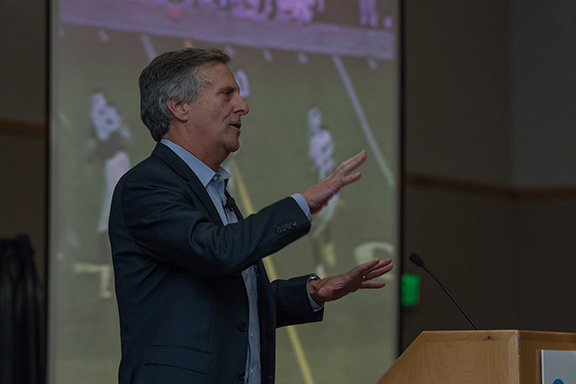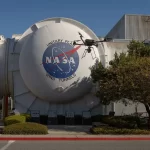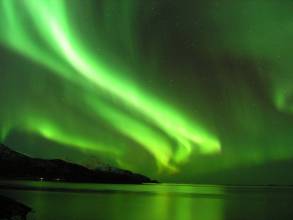As a child Stan Honey taught himself navigation and he admits he was “always good at math” and “just found navigation interesting.”
When he shared his many tales with the crowd in the Oregon Ballroom Tuesday night at the ION GNSS+ during the Plenary Session, the Yale- and Stanford-trained engineer entertained the audience with a wealth of information on early navigation systems, current navigation technologies, and how he and his colleagues developed many of the systems used to enhance the way millions of fans watch sports on television.
As a child Stan Honey taught himself navigation and he admits he was “always good at math” and “just found navigation interesting.”
When he shared his many tales with the crowd in the Oregon Ballroom Tuesday night at the ION GNSS+ during the Plenary Session, the Yale- and Stanford-trained engineer entertained the audience with a wealth of information on early navigation systems, current navigation technologies, and how he and his colleagues developed many of the systems used to enhance the way millions of fans watch sports on television.
While Honey is one of the most successful professional navigators in sailing — he even met his wife through competitive sailing – the electrical engineer also has helped pioneer some of the biggest developments in sports TV including the development of the yellow first-down line now well known by all football fans, the ESPN “K-Zone” for pitch tracking in baseball, and the Race/FX tracking and highlight system used in NASCAR races.
A love for navigating the seas has always been in Honey’s blood, and along the way his accomplishments included winning the Volvo Ocean Race around the world, setting the prestigious Jules Verne record for the fastest non-stop circumnavigation of the world, and many more honors before being named to the National Sailing Hall of Fame in 2012.
But he was not just a star at sea. Honey described his earlier projects in navigation related work in the days prior to GPS. He co-founded ETAK Inc., back in 1983 and the company pioneered vehicle navigation systems with digital map databases, heading-up map display, and map-matching navigation.
With his background at Stanford, Honey said he “knew of GPS,” at that time, but he and his colleagues were working with these vehicle navigation systems ahead of their time. This technology may have seemed a little futuristic then to some, but this first commercially available computerized navigation system for automobiles sold thousands of units in the early to mid 1980s and was featured in a cover story in Popular Mechanics in June of 1985.
Of course, as is often the case with many of Honey’s life experiences, sailing did indeed play a role with this as development of that system was backed financially by Atari co-founder Nolan Bushnell, who Honey got to know well while navigating Bushnell’s racing yacht Charley through the 1983 Transpacific championship.
This was a common thread as Honey described how his passion at sea often led to friendships and relationships that were carried over to his other love. Working with Disney on sailing projects eventually led to the ESPN “K-Zone,” for example, and the immensely popular yellow first-down line technology first made headlines with ESPN broadcasts. Earlier, selling ETAK to Rupert Murdoch and News Corp., helped pave the way to sports projects like using the technology to track hockey pucks for TV viewers.
Honey explained that many fans didn’t watch a lot of hockey on television as it was difficult to follow the puck, especially before high-definition TVs were the norm. With an accelerometer and a lithium battery installed inside the pucks, Honey’s team changed the way fans tracked the puck visually during these broadcasts in the 1990s.
But there were some concerns, he admitted. “Thankfully we never had a puck come apart,” he joked. “One of the greatest fears was, what if half a puck goes into the goal?”
This technology spread to car races and most recently America’s Cup, where GNSS equipment has changed not only the way fans watch the sport, but also the way it is officiated. Along the way, Honey and his team have earned Emmy Awards for such broadcast breakthroughs, and brought today’s navigation and precise tracking technologies into new industry sectors.
Honey and partner Ken Milnes were hired in June 2010 by Oracle Team USA to develop the tracking, telemetry, and augmented-realty system for the America’s Cup races and knew they’d need top-notch equipment to overcome obstacles that included cameras and sensors mounted on helicopters, fast yachts, and varying weather conditions. Honey thanked NovAtel for its work with the projects, noting that the company’s NovAtel SPAN GNSS/INS, OEM GNSS receiver and ProPak6 receivers have helped produce a totally enhanced, viewer friendly TV experience for sports fans.
“Sailing used to be hard to track and watch, but these graphics suddenly made it very understanding who’s ahead and who’s behind,” he said, noting that placing lines on the water for broadcasts gave viewers a feeling of comfort similar to watching football with lines on the field.
So thanks to Honey and his love for both sailing and navigation, sports like yacht racing can be enjoyed by fans who are not on the water at the events or experienced sailing pros. And the next time that “K-Zone” baseball pitch tracking helps prove the umpire made the right call for or against your team, you can thank the electrical engineering background that this lifelong navigator has used to change the way you watch your games.






